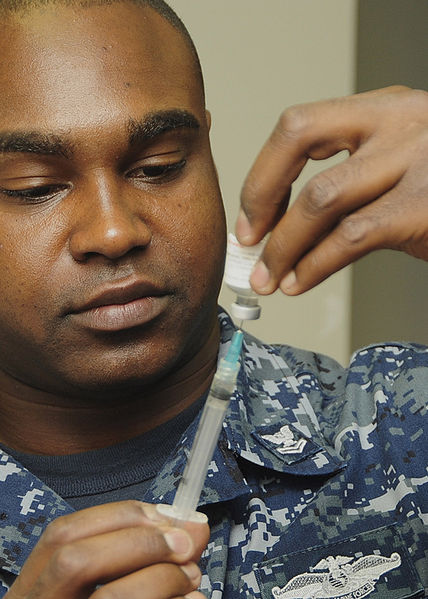Investing vaccines and antibiotics in a wrapping of silk is a  safe alternative to refrigeration, scientists have discovered.
safe alternative to refrigeration, scientists have discovered.
The so-called "cold chain" is crucial to preserving drugs and vaccines; allowed to warm up, they rapidly deactivate. But the mammoth refrigeration cost - estimated at over US$300 million per year - means that the countries with the most to gain from the use of these agents can often least afford them.
Now, a team from Tufts University in the US have shown that dressing these drug molecules up in silk can keep them in pristine condition without recourse to a cold cabinet.
David Kaplan and his colleagues found that, impregnated into thin films of silk, the antibiotic tetracycline could be stored at body temperature (37°C) for a month without any loss of activity, compared with an 80% drop in drug action when the agent was stored in solution.
Impressive results were also achieved for penicillin, which retained 100% of its activity after 30 days of storage at 60°C, and the live MMR viral vaccine, which retained high levels of potency for 20 weeks at 45°C.
Without the silk, both agents otherwise denatured completely within hours.
In their paper, published this week in PNAS, the team suggest that the drugs owe their enhanced survival to the unique molecular structure of silk, which comprises a series of tiny "nanoscale pockets" linked by stiffer protein bridges.
Particles of the antibiotics or viruses lodge snugly in these pockets, which minimise water content and prevent the particles being chemically denatured or breaking apart when they bashing into each other and other substances in solution.
According to Kaplan, such silk-stabilised medicines could be administered in the field by by adding a substance to break down the silk, releasing the active agents, or event just injecting the whole complex.
"It's almost impossible to make antibodies against silk," says Kaplan, "and it has an excellent track-record of biocompatibility". So it should be safe to use in this way.










Comments
Add a comment